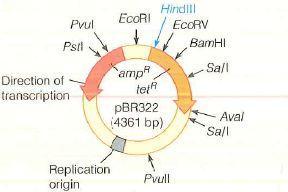
Concept explainers
(a) Interpretation:
Explain why the recombinant plasmid is treated with EcoRI to determine its size.
Concept introduction:
Plasmids are circular and small double stranded DNA and is different from the DNA of the cell's chromosome. Plasmids are naturally found in bacterial calls and some Eukaryotes. They act as a tool for the purpose of cloning, transfer and gene manipulation. Plasmids used for experimental purposes are termed as vectors. The genes or DNA fragments can be inserted into the plasmid vector which thus forms recombinant plasmid.
(b) Interpretation:
The discrepancy between the size of the recombinant molecule and the sum of the size of the HindIII cleavage fragments should be explained.
Concept introduction:
Plasmids are circular and small double stranded DNA and is different from the DNA of the cell's chromosome. Plasmids are naturally found in bacterial calls and some Eukaryotes. They act as a tool for the purpose of cloning, transfer and gene manipulation. Plasmids used for experimental purposes are termed as vectors. The genes or DNA fragments can be inserted into the plasmid vector which thus forms recombinant plasmid.
(c) Interpretation:
The diagram of the recombinant showing the locations of the HindIII cleavage sites should be drawn.
Concept introduction:
Plasmids are circular and small double stranded DNA and is different from the DNA of the cell's chromosome. Plasmids are naturally found in bacterial calls and some Eukaryotes. They act as a tool for the purpose of cloning, transfer and gene manipulation. Plasmids used for experimental purposes are termed as vectors. The genes or DNA fragments can be inserted into the plasmid vector which thus forms recombinant plasmid.
Pictorial representation:

Want to see the full answer?
Check out a sample textbook solution
Chapter 21 Solutions
Modified Masteringchemistry With Pearson Etext -- Format: Access Card Package
 BiochemistryBiochemistryISBN:9781319114671Author:Lubert Stryer, Jeremy M. Berg, John L. Tymoczko, Gregory J. Gatto Jr.Publisher:W. H. Freeman
BiochemistryBiochemistryISBN:9781319114671Author:Lubert Stryer, Jeremy M. Berg, John L. Tymoczko, Gregory J. Gatto Jr.Publisher:W. H. Freeman Lehninger Principles of BiochemistryBiochemistryISBN:9781464126116Author:David L. Nelson, Michael M. CoxPublisher:W. H. Freeman
Lehninger Principles of BiochemistryBiochemistryISBN:9781464126116Author:David L. Nelson, Michael M. CoxPublisher:W. H. Freeman Fundamentals of Biochemistry: Life at the Molecul...BiochemistryISBN:9781118918401Author:Donald Voet, Judith G. Voet, Charlotte W. PrattPublisher:WILEY
Fundamentals of Biochemistry: Life at the Molecul...BiochemistryISBN:9781118918401Author:Donald Voet, Judith G. Voet, Charlotte W. PrattPublisher:WILEY BiochemistryBiochemistryISBN:9781305961135Author:Mary K. Campbell, Shawn O. Farrell, Owen M. McDougalPublisher:Cengage Learning
BiochemistryBiochemistryISBN:9781305961135Author:Mary K. Campbell, Shawn O. Farrell, Owen M. McDougalPublisher:Cengage Learning BiochemistryBiochemistryISBN:9781305577206Author:Reginald H. Garrett, Charles M. GrishamPublisher:Cengage Learning
BiochemistryBiochemistryISBN:9781305577206Author:Reginald H. Garrett, Charles M. GrishamPublisher:Cengage Learning Fundamentals of General, Organic, and Biological ...BiochemistryISBN:9780134015187Author:John E. McMurry, David S. Ballantine, Carl A. Hoeger, Virginia E. PetersonPublisher:PEARSON
Fundamentals of General, Organic, and Biological ...BiochemistryISBN:9780134015187Author:John E. McMurry, David S. Ballantine, Carl A. Hoeger, Virginia E. PetersonPublisher:PEARSON





